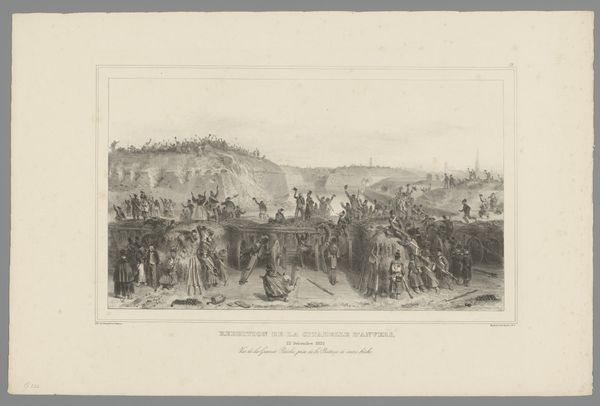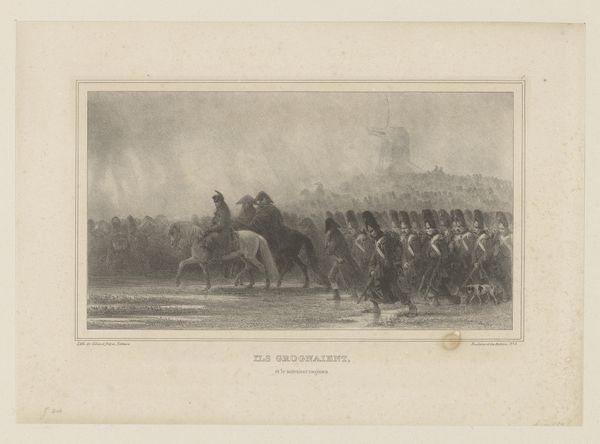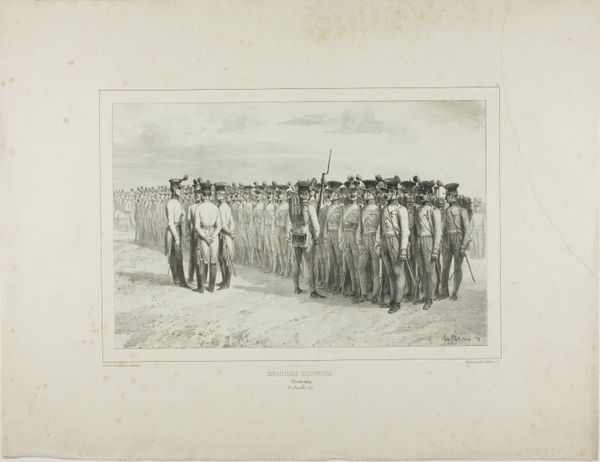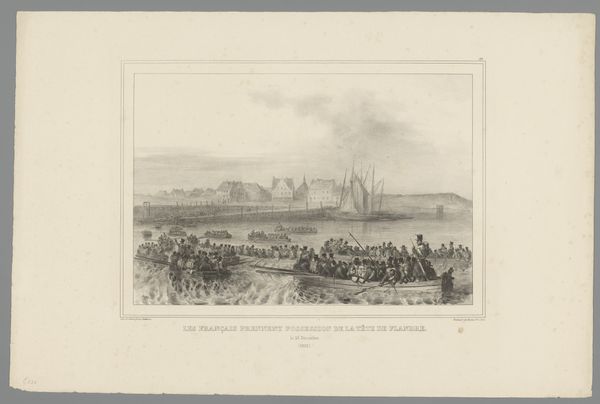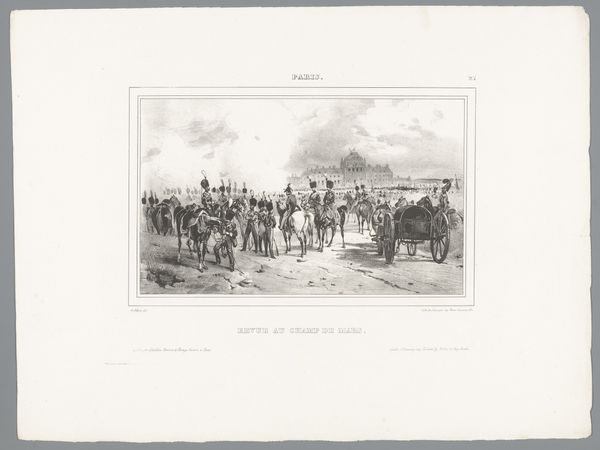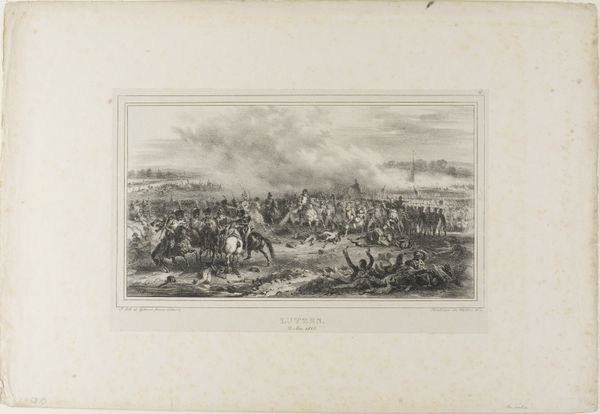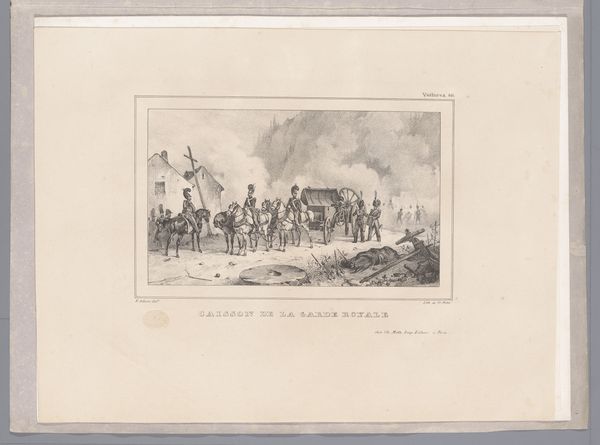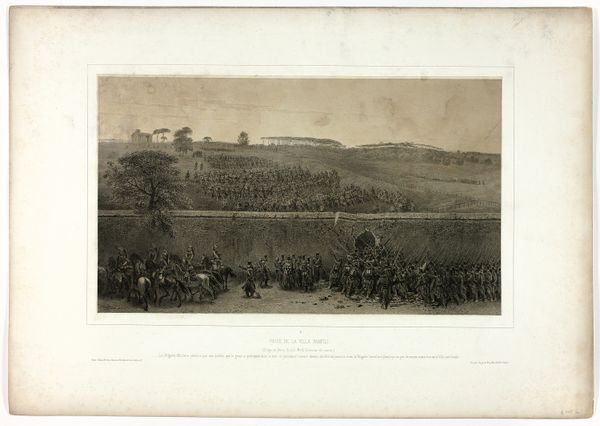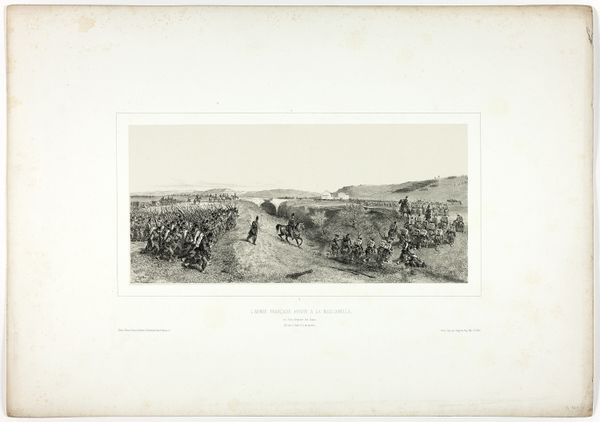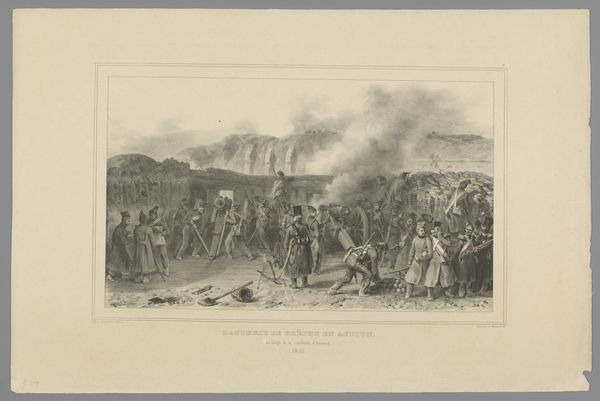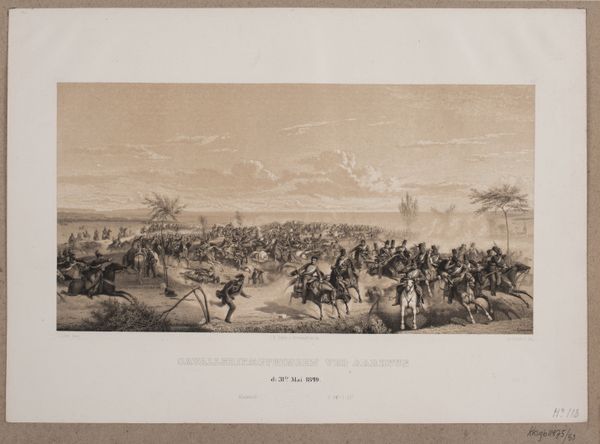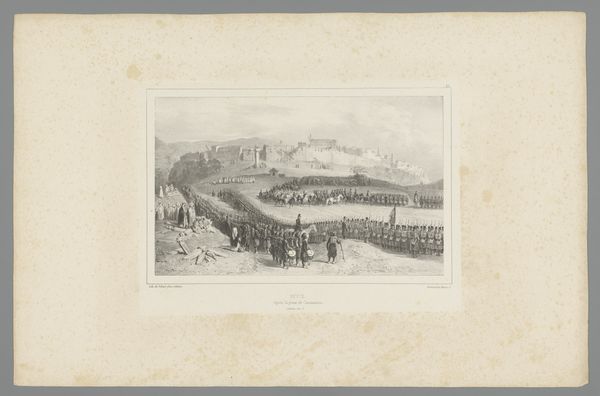
drawing, lithograph, print, paper, pencil
#
drawing
#
lithograph
# print
#
landscape
#
paper
#
romanticism
#
pencil
#
history-painting
#
realism
Dimensions: height 363 mm, width 548 mm
Copyright: Rijks Museum: Open Domain
Curator: "Bataljon marcheert op het veld," or "Battalion Marching on the Field," a lithograph by Auguste Raffet, made around 1839. It's quite stirring, isn't it? Editor: Yes, stirring is one word for it. For me, it's mostly a visual symphony of grey... so many shades fading into each other to create depth and a sense of endlessness. Curator: Raffet really captured the military spirit of the era. Remember that lithography allowed for relatively easy reproduction and dissemination. Think about how images like these shaped public perception of the military! Editor: Shaped perception, absolutely, but also probably played into anxieties about order and control during a time of considerable social upheaval. What I find particularly intriguing is how the landscape almost becomes a character itself, dissolving into a hazy background that mirrors the potential instability of military action. Curator: You make a great point! The soft rendering certainly blurs any clear distinction between the order of the troops and the unpredictability of the field. One could argue that Raffet is making a statement about man's insignificance against the backdrop of a wider world. Editor: Or perhaps he's underscoring how easily individuality gets lost in the mass? Look at the soldiers, their faces are almost indistinguishable; their movements uniform. There's a sense of both power and profound loss within this collective action. Curator: Loss of individuality in the service of the state…certainly a dominant theme in this period, and reflected in artistic portrayals. It also shows how military Romanticism was deeply influenced by a vision of collective grandeur but also of sacrifice and duty. Editor: It also subtly illustrates how images, disseminated effectively, can perpetuate, question, or even critique systems of power—even when that subversion isn’t necessarily overt. Curator: Very true. Reflecting on Raffet's print, it makes you appreciate how even in ostensibly straightforward depictions, you can unearth many layers of meaning about power, identity, and social order. Editor: Exactly. It also shows how a seemingly simple lithograph can hold so many historical, social and artistic secrets. It is the silent scream of a moving army.
Comments
No comments
Be the first to comment and join the conversation on the ultimate creative platform.
